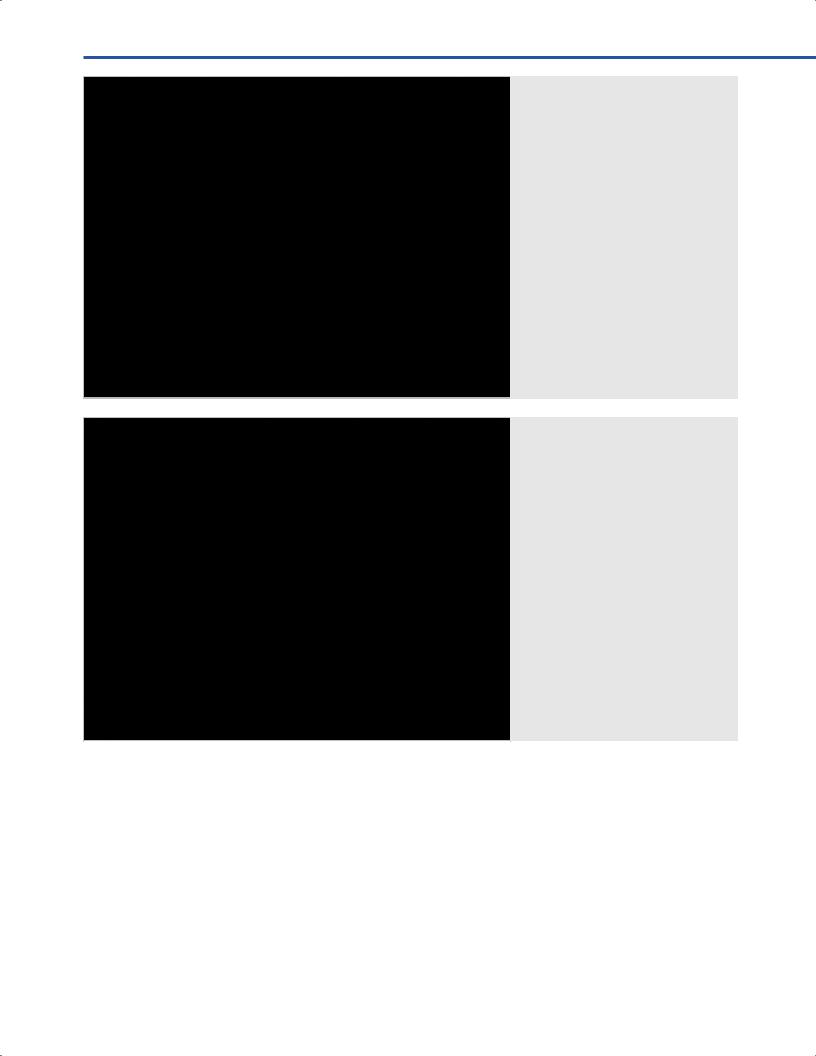
- •Operative Cranial Neurosurgical Anatomy
- •Contents
- •Foreword
- •Preface
- •Contributors
- •1 Training Models in Neurosurgery
- •2 Assessment of Surgical Exposure
- •3 Anatomical Landmarks and Cranial Anthropometry
- •4 Presurgical Planning By Images
- •5 Patient Positioning
- •6 Fundamentals of Cranial Neurosurgery
- •7 Skin Incisions, Head and Neck Soft-Tissue Dissection
- •8 Techniques of Temporal Muscle Dissection
- •9 Intraoperative Imaging
- •10 Precaruncular Approach to the Medial Orbit and Central Skull Base
- •11 Supraorbital Approach
- •12 Trans-Ciliar Approach
- •13 Lateral Orbitotomy
- •14 Frontal and Bifrontal Approach
- •15 Frontotemporal and Pterional Approach
- •16 Mini-Pterional Approach
- •17 Combined Orbito-Zygomatic Approaches
- •18 Midline Interhemispheric Approach
- •19 Temporal Approach and Variants
- •20 Intradural Subtemporal Approach
- •21 Extradural Subtemporal Transzygomatic Approach
- •22 Occipital Approach
- •23 Supracerebellar Infratentorial Approach
- •24 Endoscopic Approach to Pineal Region
- •25 Midline Suboccipital Approach
- •26 Retrosigmoid Approach
- •27 Endoscopic Retrosigmoid Approach
- •29 Trans-Frontal-Sinus Subcranial Approach
- •30 Transbasal and Extended Subfrontal Bilateral Approach
- •32 Surgical Anatomy of the Petrous Bone
- •33 Anterior Petrosectomy
- •34 Presigmoid Retrolabyrinthine Approach
- •36 Nasal Surgical Anatomy
- •37 Microscopic Endonasal and Sublabial Approach
- •38 Endoscopic Endonasal Transphenoidal Approach
- •39 Expanded Endoscopic Endonasal Approach
- •41 Endoscopic Endonasal Odontoidectomy
- •42 Endoscopic Transoral Approach
- •43 Transmaxillary Approaches
- •44 Transmaxillary Transpterygoid Approach
- •45 Endoscopic Endonasal Transclival Approach with Transcondylar Extension
- •46 Endoscopic Endonasal Transmaxillary Approach to the Vidian Canal and Meckel’s Cave
- •48 High Flow Bypass (Common Carotid Artery – Middle Cerebral Artery)
- •50 Anthropometry for Ventricular Puncture
- •51 Ventricular-Peritoneal Shunt
- •52 Endoscopic Septostomy
- •Index

34 Presigmoid Retrolabyrinthine Approach
Lucas Troude, Silvestre De La Rosa, Anthony Melot, and Pierre-Hugues Roche
34.1 Introduction
The principle of the retrolabyrinthine approach (RLA) is to achieve an enlarged mastoidectomy, while sparing the neu- ro-otologic structures. The RLA has been originally described by otological groups for the treatment of refractory Meniere’s disease but indications have been gradually extended to the neurosurgical feld for various cerebellopontine angle (CPA) tumors or vascular disease.
The RLA is a demanding technique because it requires an excellent knowledge of the petrous bone anatomy and of its main variations. We present herein the technique, limitations and indications of the RLA.
34.2 Indications
In the neurosurgical feld, the indications have substantially decreased over years.
•Presigmoid broad based meningeal tumors.
•Tumors infltrating the transverse and sigmoid sinuses, which require extensive surgery (aggressive/recurrent meningiomas).
•Endolymphatic sac tumors.
•Some surgeons are still operating vestibular schwannomas using the approach in order to preserve hearing.
•Exceptional cases of dural arteriovenous fstulas are treated through a RLA in case of failed endovascular treatment. This approach can extensively disconnect the totality of arterial dural feeders.
•Intra-axial brain diseases like cerebellar or pontine cavernomas.
•In our hands, this approach is mostly used as a frst step of combined approaches. We routinely propose the RLA associated with an anterior petrosectomy, the so-called “combined petrosectomy” to resect large petroclival meningiomas. We also combine the RLA with a high cervical dissection for large jugulo-tympanic paragangliomas.
34.3 Surgical Anatomy (Figs. 34.1, 34.2)
•The petrous pyramid makes the junction between the middle and the posterior fossa.
•The base of the pyramid corresponds to its outer surface, which main part is occupied by the cortical bone that covers the mastoid process (MP).
•The external contours of MP grossly describe a triangle delineated by three points, the mastoid tip at the bottom, the posterior zygomatic point at the anterosuperior corner and the asterion at the postero-superior corner.
Fig. 34.1 Bone exposure after soft tissues dissection.
Abbreviations: A = asterion; EAC = external auditory canal; HS = spine of Henle;
M = mastoid; PRZ = posterior root of the zygoma; TS = temporal squama.
207

IV Transpetrosal Approaches
•The frst step of the surgery is conducted through this triangle with gradual exposure of the posterior surface of the petrous bone and presigmoid dura.
•The drilling of the mastoid will give access to the mastoid antrum that is always identifed regardless the degree of pneumatization of the petrous bone. Medially to the antrum, the external contour of the posterior labyrinth is seen.
•The 3 semicircular canals (SCC) display a constant orientation in between them with a 90° angulation to each other. The average diameter of each canal is around 8 mm. The canals are covered by a shell of compact bone with a density that is usually very distinct from the compact bone, diferent from the cancellous bone of the mastoid air cells.
•Two important landmarks are exposed at the level of the posterior labyrinth. The frst one is the loop of the lateral SCC that covers the second portion of the intra-petrous facial nerve that runs into the Fallopian canal. The second is the junction of the posterior SCC to the superior SCC, named the common crus.
•The dura that covers the posterior surface of the petrous bone is framed by venous sinuses (superior and inferior petrosal sinuses, sigmoid sinus), which have variable size and diameter. The petrous ridge is a groove where runs the superior petrosal sinus. This sinus corresponds to the upper limit of the drilling depth. The superior petrosal sinus and tentorium collect part of the venous drainage of the temporal lobe through tempo- ro-basal veins and the vein of Labbé. The optimal knowledge of the individual tailored pattern of drainage is worthwhile before deciding to expose and divide a sinus or tentorium if needed during the approach.
Fig. 34.2 Anatomy and variations of the mastoid air cells and venous sinuses. (A) The st step of the approach, supe al drilling
and skeletonization of sigmoid sinus have been achieved on the right temporal bone. One can appreciate the forward course of the sigmoid sinus at the close vicinity of the posterior margin of the bony external auditory canal.
(B) Bone window CT scan of the left petrous bone. The white arrow indicates a high jugular bulb position at the same level than the posterior margin of the internal auditory canal.
(C) Bone window CT scan of the left petrous bone. The pneumatization of the mastoid air cells is dramatically poor and only the mastoid antrum can be seen (black arrow). (D) Bone window CT scan of the left petrous bone. The pneumatization of the mastoid air cells is huge and will facilitate the drilling process and the ident tion of the compact bony shell that covers the SCCs. The white arrow indicates the mastoid antrum while the yellow arrow shows the aditus ad antrum, which is the corridor that makes communication between the middle ear and the antrum.
Abbreviations: EAC = external auditory canal; HS = spine of Henle; M = mastoid; PFD = posterior fossa dura; SS = sigmoid sinus.
Their diagnosis may infuence the operative technique and be responsible for potential complications if overlooked.
•In many cases, the course of the sigmoid sinus is located anteriorly; this anterior location is defned by a distance between the anterior border of the sinus and the posterior wall of the external auditory canal of less than 15 mm (Fig. 34.2A).
•The roof of the jugular bulb may be highly seated and reach the level of the posterior SCC or even higher at the level of the posterior wall of the IAC in rare cases (Fig. 34.2B); this confguration may hamper the drilling process.
•Another variation involves the degree of aeration of the petrous bone. Indeed, pneumatization may change from very compact petrous bone (Fig. 34.2C), where the air cells are almost absent excepting the constant antrum, to the highly aerated petrous bone that makes the approach easier and faster (Fig. 34.2D).
34.5 Patient Positioning
•Position: The patient is positioned supine with the head fxed in a Mayfeld 3-pin holder.
•Head: The head is rotated 80° toward the opposite side.
Care is taken not to occlude the contralateral jugular vein by excessive rotation.
•The surgeon stands behind the head and the pinna.
•The facial nerve monitoring is compulsory.
•Neuronavigation may be helpful to fnd the mastoid antrum and the SCCs in case of very compact mastoid.
34.4 Variations in Surgical Anatomy 34.6 Skin Incision
•Several variations of the key structures need to be mentioned (Fig. 34.2). These variations should be identifed before starting the surgery while checking the preoperative images.
•Peri-Auricular skin incision (See Chapter 7)
○Starting point: Incision starts at preauricular temporal region superiorly.
208

34 Presigmoid Retrolabyrinthine Approach
○Course: It runs 1 cm away from the external circumference of the pinna.
○Ending point: It ends at the level of the mastoid tip inferiorly.
34.7 Soft Tissue Dissection
•Myofascial Level
○The skin incision spans the galea and the underlying pericranium.
•Muscles
○The muscles and deep fascia are elevated from the bone with a monopolar section, and retracted anteriorly.
○The sternocleidomastoid muscle is detached from the mastoid and mobilized downward.
•Bone Exposure
○The base of the petrous pyramid is now clearly exposed with an anterior limit that corresponds to the posterior wall of the external auditory canal, that is marked by the spine of Henle (Fig. 34.1).
34.8 Critical Structures
○Occipital artery, which needs to be ligated.
○Emissary vein (bone wax hemostasis).
○The skin of the external auditory canal in case of incision proceeding excessively in front of the spine of Henle.
34.9 Craniectomy (Figs. 34.3–34.9)
•The surgeon is equipped with a 6 to 8 mm cutting burr and will gradually shave the mastoid under copious irrigation. The drill is held like a pen and oriented tangentially to the structures that must be shaved.
•During this step, the key point is to skeletonize the
sigmoid sinus and its junction with the SPS, which is named sinodural angle (or angle of Citelli) (Fig. 34.3). It is strongly recommended to leave a thin shell of compact bone over the sinuses to avoid any tear. This shell will be subsequently elevated with a sharp dissector.
•Depending on the course of the sigmoid sinus the opening of the angle may be a matter of variation. For instance, in case where the sigmoid sinus (SS) is anteriorly displaced as shown in Fig. 34.2, the angle is very narrow which hampers the access to the mastoid cells. In order to increase his working space, the surgeon will extend the drilling process behind the SS and above the superior petrosal sinus (SPS) (foor of the temporal fossa); proceeding in this way, the sinus will be mobilized downward and the angle will become wider.
•The opening of the mastoid antrum that is located at the postero-superior corner behind the external auditory canal (EAC) allows the identifcation of the posterior labyrinth (Figs. 34.4, 34.5). The surgeon keeps drilling with a diamond burr under microscope and continuous irrigation.
•The semicircular canals are covered by a shell of compact yellowish bone which texture is in sharp contrast with the loosely aerated bone around.
○The lateral SCC is seen frst and care is taken to avoid any drilling under its surface due to the close vicinity of the second portion of the facial nerve.
○The posterior SCC is then skeletonized. At its posterior border, the notch of the endolymphatic canal is seen under microscope and communicates with a triangular shape thickening of the presigmoid dura that correspond to the endolymphatic sac.
○The last canal to be exposed is the superior SCC lying in the depth and connected posteriorly to the lateral
SCC by the common crus. The surgeon should avoid any excessive anterior drilling at the level of the ampulla of the superior and lateral SCCs because the facial nerve runs (junction frst and second portion) very nearby.
Fig. 34.3 teps of a retrolabyrin - thine approach conducted under microscope on the right side of an injected cadaver
s al step of the drilling. Skeletonization of the sigmoid sinus with exposure of the dura of the temporal fossa that allows the ident tion of the sinodural angle.
Abbreviations: HS = spine of Henle; PB = petrous bone; PFD = posterior fossa dura; SDA = sino-dural angle; SS = sigmoid sinus; TFD = temporal fossa dura; TS = temporal squama.
209

IV Transpetrosal Approaches
•Once the SCCs have been exposed (Figs. 34.6, 34.7), the drilling is conducted inferiorly in the infralabyrinthine area behind the third portion of the facial nerve. While drilling the infralabyrinthine cells, the digastric ridge is encountered inside the mastoid cortex and toward the mastoid tip. This landmark is located just behind the stylomastoid foramen from where the course of the third portion of the facial nerve can be drawn.
•The roof of the jugular bulb is now exposed even though this step may be challenging because the venous wall is extremely thin and fragile (Figs. 34.8, 34.9). Again, it is strongly advised to leave a piece of bone that will protect the vein.
Fig. 34.4 erent steps of a retrolabyrinthine approach conducted under microscope on the right side of an injected cadaver specimen. The gradual drilling in the depth of the mastoid allows more exposure of the presigmoid dura and the one of the temporal fossa, thereby widening the sinodural angle and increasing the corridor of approach. Abbreviations: HS = spine of Henle;
MA = mastoid antrum; PFD = posterior fossa dura; SDA = sino-dural angle; SS = sigmoid sinus; TFD = temporal fossa dura.
Fig. 34.5 teps of a retrolabyrin - thine approach conducted under microscope on the right side of an injected cadaver specimen. The drilling has been carried out in the depth as far as the labyrinthine block. The respective position and orientation of the three SCCs can be assessed. Abbreviations: HS = spine of Henle;
LB = labyrinthine block; SS = sigmoid sinus; TFD = temporal fossa dura.
•At the end of the drilling step, the surgeon has achieved a full exposure of the presigmoid dura following the limits described as the Trautmann’s triangle (anterior border of the
SS, SPS, posterior SCC and third portion of the facial canal).
34.10 Dural Opening
•The dura opening can be carried out in diferent manners.
•One option is to open it just in front of the SS for the vertical arm and under the SPS for the horizontal arm of the dural fap that will be retracted anteriorly.
210

34 Presigmoid Retrolabyrinthine Approach
34.11 Intradural Exposure
•Parenchymal structures: Middle cerebellar peduncle, cerebellar hemisphere, Lushka foramen.
•Cranial nerves: From the ffth to the lower cranial nerves.
•Arteries: Anterior inferior cerebellar artery (AICA), posterior inferior cerebellar artery (PICA).
•Veins: Petrosal vein, subpial pontine venous network.
34.12 Closure
•Once the intradural step has been achieved, the closure is done by re-approaching the dura. At this point the dura cannot be easily closed water-tightly; thus, the usual way is to plug the defect and the mastoid cavity using fat.
•We routinely use stripes of fat that have been harvested from the abdomen. This step requires an additional skin incision and this must be mentioned to the patient before surgery.
Fig. 34.6 teps of a retrolabyrin - thine approach conducted under microscope on the right side of an injected cadaver specimen. Close-up view of the SCCs. The drilling has been achieved at the point where the blue line of the posterior SCC is seen under irrigation. More drilling will carry the risk of opening the canal and experience delayed deafness. The white arrow indicates the junction between the second and the third portion of the intra-petrous facial nerve. Abbreviations: FN = facial nerve; HS = spine of Henle; HSC = horizontal semicircular canal; I = incus; PSC = posterior semicircular canal; SDA = sino-dural angle; SS = sigmoid sinus; SSC = superior semicircular canal;
TFD = temporal fossa dura.
Fig. 34.7 Operative view of the retrolabyrinthine approach on the right side. The temporal fossa and presigmoid dura are shown. The blue color of the sigmoid sinus makes an angle with the temporal fossa named sinodural angle. In the depth, the compact bone that covers the SCCs is clearly seen while the antrum has been opened.
Abbreviations: HSC = horizontal semicircular canal; I = incus; PSC = posterior semicircular canal; PSD = presigmoid dura; SDA = sino-dural angle; SS = sigmoid sinus; SSC = superior semicircular canal; TFD = temporal fossa dura.
•In case of large bony defect the use of titanium mesh that covers the mastoid tip resection may reduce the cosmetic burden.
34.13How to Prevent Complications
•Careful case selection is the most important point.
•The surgeon carefully checks the preoperative bone window
CT of the petrous bone to confrm the amount of pneumatization of the mastoid air cells.
•The surgeon carefully checks the angio-CT or angio-MR to assess the course of the sigmoid sinus and jugular bulb and potential infltration or occlusion of the sinus.
•During surgery, one important task is to optimize the exposure of the sinodural angle as well as the skeletonization of the common crus. Careful hemostasis will be performed before opening the dura.
211

IV Transpetrosal Approaches
Fig. 34.8 Operative view of the retrolabyrinthine approach on the right side. Final exposure after achieved drilling. The SSCs are fully skeletonized. The whole course of the sigmoid sinus from the sinodural angle to the jugular bulb is exposed.
Abbreviations: HS = spine of Henle; HSC = horizontal semicircular canal; I = incus;
JB = jugular bulb; PSC = posterior semicircular canal; PSD = presigmoid dura; SDA = sino-dural angle; SS = sigmoid sinus; SSC = superior semicircular canal;
TFD = temporal fossa dura.
References
1. Darrouzet V, Martel J, Enée V, Bébéar JP, Guérin J. Vestibular schwannoma surgery outcomes: our multidisciplinary experience in 400 cases over 17 years. Laryngoscope 2004; 114(4):681–688.
2. de Melo JO, Klescoski J, Nunes CF, Cabral GA, Lapenta MA, Landeiro JA. Predicting the presigmoid retrolabyrinthine space using a sigmoid sinus tomography classifcation: A cadaveric study. Surg Neurol Int 2014;5:131.
3. Roche PH, Moriyama T, Thomassin JM, Pellet W. High jugular bulb in the translabyrinthine approach to the cerebellopontine angle: anatomical considerations and surgical management. Acta Neurochir (Wien) 2006;148(4):415–420.
Fig. 34.9 Cadaveric view of the retrolabyrinthine approach on the right side. The third portion of the facial nerve and chorda tympani (CT), which usually does not require full exposure is seen as well as the endolymphatic sac (ES).
Abbreviations: CT = chorda tympani; ES = endolymphatic sac; FC = Fallopian canal; GG = geniculate ganglion; HSC = horizontal semicircular canal; I = incus; JB = jugular bulb; PSC = posterior
semicircular canal; PSD = presigmoid dura; SDA = sino-dural angle; SS = sigmoid sinus; SSC = superior semicircular canal;
TFD = temporal fossa dura.
212

35 Translabyrinthine and Transcochlear Transpetrosal
Approach
Cristian Gragnaniello, Parisa Sabetrasekh, Sam Maghami, Alan Siu, Zachary Litvack, and Ashkan Monfared
35.1 Introduction
Presigmoid approaches decrease the working angle and depth of feld as compared to retrosigmoid approaches, and are indicated for extra-axial lesions anterolateral to the brainstem, petroclival lesions, or deep-seated brainstem lesions.
Common pathologies in the internal auditory canal (IAC) and cerebellopontine angle (CPA) include vestibular schwannomas, meningiomas, and epidermoids. These approaches can also be combined with a middle fossa craniectomy for lesions extensively involving the temporal bone or spanning both sides of the tentorial incisura.
The translabyrinthine and transcochlear approaches are variations of a posterior transpetrosal approach, which provide access to the IAC and CPA. These approaches are usually used in patients in whom the hearing is already compromised. In the translabyrinthine approach, the labyrinth is removed, sacrifcing hearing if present, to provide an anterolateral view of the CPA without cerebellar retraction.
The transcochlear approach, with or without transposition of the facial nerve (placing the VII cranial nerve at increased risk for iatrogenic injury), provides additional access to the mid-clivus, petrous apex, and pre-pontine cistern.
35.2 Indications
•Lesions of the internal auditory canal or cerebellopontine angle.
•Anterior and ventral brainstem lesions in patients with non-serviceable hearing.
•Deep-seated brainstem lesions.
•Petroclival lesions.
•Tumors extending into the cochlea.
•Tumors extending into the temporal bone.
•Tumor remnants from a previous retrosigmoid or middle fossa approach.
35.3 Patient Positioning
Patients may be positioned supine, lateral, or ¾ prone (aka park-bench) at the discretion of the surgeon.
Supine position is preferred when possible as it minimizes the risk of pressure ulcers and positional neuropathies, but requires a patient with good cervical range of motion, and can be difcult in obese patients or those with broad shoulders.
If not supine, we prefer ¾ prone to lateral as it drops the shoulder out of the feld, increasing the angle of attack toward the tentorium.
35.3.1 Supine
•Position: The patient is positioned supine and the head is not pinned (i.e., placed on a foam donut or a cerebellar headrest).
•Body: The shoulders and body remain parallel to the foor. The elbows are padded and the arms tucked against the body.
•Head: The head is rotated 60° contralateral to the side of the pathology. The auricle of the ear may be folded over the external canal and taped.
•The external ear is the highest point in the surgical feld.
35.3.2 Three-Quarters Prone
•Position: The patient is positioned three-quarters prone, with the head fxed in a Mayfeld head holder.
•Body: The body is held in place with a sandbag. An axillary roll is placed about 5 cm below the axilla. The dependent arm is placed in a sling, and the upper arm placed on an armrest. A pillow is placed in between the legs with the top leg fexed 45°. Extensive padding is used on the elbows, hands, hips, knees, ankles, and areola of the breasts to prevent pressure ulcers.
•Shoulder: The shoulder is taped downward and away from the ear to minimize hindrance.
•Head: The head is rotated 45° contralateral to the side of the pathology.
35.4 Skin Incision (Fig. 35.1)
•Curvilinear incision
○Starting point: The incision starts 3 cm radially, posterior to the post-auricular sulcus.
○The ending points are just superior to the pinna and inferior to the mastoid tip. A periosteal fap may be elevated separate from the skin incision depending on the soft tissue thickness.
35.4.1 Critical Structures
•The external auditory canal (EAC) is anterior to the spine of Henle.
•Great care should be taken not to lacerate the skin of the external auditory canal while elevating the subperiosteal fap.
•If the skin is transected, the EAC may need to be completely sealed and the contents of the ear canal and middle ear completely removed to prevent cerebrospinal fuid (CSF) fstula formation post-operatively.
35.5 Soft Tissue Dissection
•Myocutaneous level
○A myocutaneous fap is raised just superfcial to the deep temporal fascia and the mastoid periosteum (Fig. 35.2).
○Subperiosteal fap is elevated anteriorly and posteriorly after making an incision on the temporal line extending from the root of the zygoma posteriorly and then connected with a separate incision to the mastoid tip (Fig. 35.3).
213

IV Transpetrosal Approaches
Fig. 35.1 Curvilinear incision with a 3 cm radius posterior to the postauricular sulcus. Abbreviations: MT = mastoid tip; PAS = postauricular sulcus.
Fig. 35.2 Myocut aised to expose the deep temporal fascia. Abbreviations: DTF = deep temporal fascia;
E = ear; MCF = myocut |
T = |
mastoid tip; TM = temporal muscle. |
|
Fig. 35.3 Deep temporal fascia, temporal muscle, and periost y be elevated separately or all at once as shown here. Incision is made at the posterior root of zygoma on the inferior temporal line and connected with a separate incision to the mastoid tip. Abbreviations: DTF = deep temporal fascia; E = ear; MCF = myocutane T = mastoid tip; PRZ = posterior root of the zygoma; TB = temporal bone; TL = temporal line; TM = temporal muscle.
214

35 Translabyrinthine and Transcochlear Transpetrosal Approach
○The myocutaneous and periosteal faps are refected anteriorly.
•Bone exposure
○Spine of Henle.
○Mastoid tip.
35.6 Mastoidectomy/
Labyrinthectomy
•Mastoidectomy landmarks (Fig. 35.4)
○MacEwan’s Triangle.
–EAC and Spine of Henle.
–Mastoid tip.
–Root of the zygoma.
35.6.1 Critical Structures
•A cortical mastoidectomy will expose the following structures (Fig. 35.5).
○Tegmen or the bone underlying the middle fossa dura.
○Sigmoid sinus and transverse sinus.
○Posterior fossa dura. The junction between the tegmen and the sigmoid sinus is known as sinodural angle. Superior petrosal sinus is located in the junction between middle and posterior fossa dura at the edge of the tentorium.
○Endolymphatic sac is encountered while exposing the dura, and should be sharply divided from the vestibular aqueduct.
○Antrum with incus seen in the fossa incudis.
○Lateral semicircular canal.
○Facial nerve and chorda tympani.
•Labyrinthectomy landmarks (Figs. 35.6–35.9)
○Anterior-superior: Antrum and Incus.
○Anterior-inferior: Facial nerve.
○Posterior: Posterior fossa dura.
○Superior: Middle fossa dura.
○Inferior: Retrofacial air cells.
35.6.2 Critical Structures
•Facial Nerve: Intimately associated with the ampulla of the semicircular canals.
•Superior, lateral, posterior semicircular canals.
•Superior petrosal sinus.
•Cochlectomy landmarks after removal of the bone of the EAC, tympanic membrane and the ossicles.
○Anterior: Petrous internal carotid artery (ICA) and the
Eustachian tube.
○Posterior: Descending facial nerve.
○Superior: Geniculate ganglion and tympanic segment of the facial nerve.
○Inferior: Jugular bulb.
35.7 Internal Auditory Canal
Dissection (Fig. 35.10)
•Circumferential bony removal 270° by creating superior and inferior troughs over the IAC.
35.7.1 Critical Structures
•Facial nerve and geniculate ganglion.
•Superior and inferior vestibular nerve.
•Cochlear nerve.
•Transverse crest.
•Vertical crest or Bill's bar.
35.8 Dural Opening (Figs. 35.11, 35.12)
•H-shaped incision inferior to the superior petrosal sinus and superior to the horizontal segment of the sigmoid sinus connected posterior to the dura of the porus acusticus.
Fig. 35.4 The MacEwan’s triangle is a small triangular depression bordered by the spine of Henle (suprameatal spine), posterior root of the zygomatic arch, and the line joining the two borders. The mastoid antrum lies
1 to 2 cm deep to the MacEwan’s triangle. Abbreviations: E = ear; MET = MacEwan’s triangle; MT = mastoid tip; PRZ = posterior root of the zygoma; SH = spine of Henle.
215

IV Transpetrosal Approaches
Fig. 35.5 Cortical mastoidectomy with exposure of relevant structures. Abbreviations: MA = mastoid antrum; MAC = mastoid air cells; MFDP = middle
fossa dura plate; PFDP = posterior fossa dura plate; PWEAC = posterior wall of the external acoustic canal; SH = spine of Henle; SS = sigmoid sinus; TM = temporal muscle.
Fig. 35.6 Labyrinthectomy with demonstration of critical structures.
Abbreviations: CT = chorda tympani; DR = digastric ridge; FI = fossa incudis; FN = facial nerve; I = incus; LSC = lateral semicircular canal; MFDP = middle fossa dura plate; PFDP = posterior fossa dura plate; PSC = posterior semicircular canal; FRAC = facial recess air cells; SH = spine of Henle; SS = sigmoid sinus.
Fig. 35.7 The bones over the middle fossa and posterior fossa plates are removed before labyrinthectomy is performed. Abbreviations: ELS = endolymphatic sac; FRAC = facial recess air cells; ILRFAC = infralabyrinthine retrofacial air cells; JB = jugular bulb; MFD = middle fossa dura;
PFD = posterior fossa dura; SAA = subarcuate artery; SS = sigmoid sinus; SSC = superior semicircular canal.
216

35 Translabyrinthine and Transcochlear Transpetrosal Approach
Fig. 35.8 Partial labyrinthectomy has been performed to demonstrate the opening into the balance canals.
Abbreviations: CC = common crus; JB = jugular bulb; LSC = lateral semicircular canal; MFD = middle fossa dura; PSC = posterior semicircular canal; SS = sigmoid sinus; SSC = superior semicircular canal.
Fig. 35.9 Complete labyrinthectomy. Abbreviations: EA = endolymphatic aqueduct; ES = endolymphatic sac; JB = jugular bulb; MFD = middle fossa dura; SS = sigmoid sinus; V = vestibule.
Fig. 35.10 Decompression of the internal auditory canal by creation of superior and inferior troughs of bone over the canal.
Abbreviations: CT = chorda tympani; ES = endolymphatic sac; FI = fossa incudis; FNMS = facial nerve mastoid segment;
I = incus; IAC = internal acoustic canal;
ITB = inferior trough of bone; STB = superior trough of bone.
217

IV Transpetrosal Approaches
35.8.1 Critical Structures
•Contents of the IAC including CNVII and VIII as well as labyrinthine artery.
•Superior petrosal sinus.
•Sigmoid sinus and jugular bulb.
35.9 Intradural Exposure (Fig. 35.12)
•Cranial Nerves: from the ffth to the ninth cranial nerve.
•Parenchymal Structures: cerebellum, anterolateral brainstem, focculus, choroid plexus.
Fig. 35.11 Opening of the posterior fossa dura.
Abbreviations: C = cerebellum; JB = jugular bulb; MFD = middle fossa dura; PFD = posterior fossa dura; SS = sigmoid sinus.
Fig. 35.12 Opening of the dura over the internal auditory canal. Contents of the IAC are facial nerve, vestibulocochlear nerve, and labyrinthine artery (not shown). Abbreviations: AICA = anterior inferior cerebellar artery; JB = jugular bulb; SS = sigmoid sinus; VII-VIII = facial and vestibule-cochlear nerve.
•Arteries: AICA with labyrinthine artery, SCA.
•Veins: superior petrosal vein (Dandy’s vein).
References
1.Jackler RK, Jackler RK. Atlas of skull base surgery and neurotology, 2nd ed. New York, NY: Thieme Medical Publisher; 2009.
218

PartXXXXV
Endonasal, Transoral,xxxxand
Transmaxillary Procedures
x36 xxxxxxxxNasalSurgical Anatomy
x xxxxxxxx
37 Microscopic Endonasal and Sublabial
Approach x xxxxxxxx
38 Endoscopic Endonasal Transphenoidal
x xxxxxxxx
Approach
39Expanded Endoscopic Endonasal Approach
40Endoscopic Endonasal Modified Lothrop Approach to Anterior Cranial Fossa
221x
x
228 x
x 236
242
249
IIIV |
||
41 |
Endoscopic Endonasal Odontoidectomy |
255 |
42 |
Endoscopic Transoral Approach |
260 |
43 |
Transmaxillary Approaches |
266 |
44 |
Transmaxillary Transpterygoid |
|
|
Approach |
270 |
45 |
Endoscopic Endonasal Transclival |
|
|
Approach with Transcondylar Extension |
274 |
46 |
Endoscopic Endonasal Transmaxillary |
|
|
Approach to Vidian Canal and |
|
|
Meckel’s Cave |
280 |
|
219 |
|

